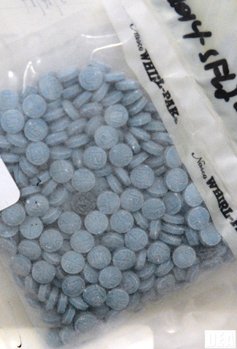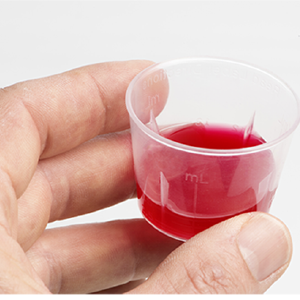Oklahoma Does Not Escape the Curse of Fentanyl
In the world of opiates and opioids (synthetic opiates), things never stay the same for long. Drugs on the market shift, trafficking and use patterns change. First responders and medical staff are hard-pressed to keep up with the latest drugs on the market so they can save lives. One of the most recent changes – the appearance of the illicitly-manufactured and powerful painkiller fentanyl – has resulted in the loss of lives all across the country, including in Oklahoma.
Background on Opiates and Opioids
For many years, the chief opiate that law enforcement and medicine had to deal with was heroin. This drug could be powerful or could have been diluted down to a very weak concentration. A person used to a weak product or who had been abstinent for a few weeks – maybe in jail or rehab – could easily overdose by getting an unexpectedly strong batch.
In the mid-1990s, the pattern of opiate addiction began to change. Pharmaceutical representatives from Purdue Pharma were taught to instruct doctors that their extended-release painkiller OxyContin was not likely to be abused and was not addictive. So doctors began to treat pain more freely, prescribing OxyContin for problems like tooth extractions, low back pain and sports injuries. They very often sent a person home with a month’s worth of pills for a problem causing short-term pain. With all those pills on hand, millions of people began to share them, abuse them for the warm, mellow feeling they offered and quickly became addicted to them.
Addiction to Painkillers Began to Grow
In the late 2000s, as the number of people addicted to opioids like OxyContin grew ever larger, government agencies began to sound the alarm. Purdue Pharma responded by changing the formula of OxyContin to make it hard to abuse. The reaction of those addicted to the drug was very often to go looking for heroin. By plan or by chance, distribution methods for heroin went through a metamorphosis at about the same time. Street-level dealers began to deliver heroin to the suburbs and small towns, meaning that a person who wanted to use heroin no longer had to drive to the inner city to get drugs. The drugs would come to him.
The doctors who had started their patients on the path to addiction did not know how to help them break free. Even after problems showed up, doctors didn’t know how to spot a person who was only visiting the doctor to get more addictive drugs and they certainly didn't know how to deal with an addicted patient. Therefore the problem of opioid abuse and addiction could just continue to grow. As more people began to migrate to heroin costing a fraction of the price of a pain pill, the number of people addicted to heroin and killing themselves with heroin overdoses began also to increase.
An Illicit Mexican Pharmaceutical Lab Set Big Changes in Motion
A decade ago, an illicit drug lab was established in Mexico. But it wasn’t manufacturing heroin or cocaine, it was manufacturing fentanyl, a prescription pain reliever that’s 50 to 100 times stronger than morphine. Their drug made its way into heroin supplies, making the resulting supply so strong that overdoses skyrocketed. In Philadelphia, Chicago and New York, more than 1,000 people died between 2005 and 2007.
Fortunately, the lab was located and destroyed. Fentanyl stopped being a threat.
A New Era of Fentanyl Arrives
In 2013, fentanyl overdoses once again appeared in America. Law enforcement agencies quickly began to warn the public about the renewed presence of this drug and the possibility of overdose. This time, the drug was being manufactured in China and the product often showed up in the form of counterfeit pills of OxyContin or Norco, another prescription painkiller. And once again, America began losing its people to this illicit fentanyl.

In a recent report, the Boston Globe noted that more than half of the state’s 1,379 overdose deaths in 2015 involved fentanyl. Even in Oklahoma – far from the large urban centers where heroin was once so plentiful – those who think they are buying heroin are actually getting fentanyl. From the summer of 2015 to February 2016, 47 Oklahomans died from using fentanyl.
Some of those who died may have known they were using fentanyl. They may have obtained used pain patches containing this medication and smoked the small amount of gel left in them. They may have obtained some pills of fentanyl or they may have purchased what they thought was heroin and got a batch that had been mixed with fentanyl instead.
When the drug is used medically, the proper dose of pure fentanyl is about the size of two grains of salt, which explains why the drug is usually made into a gel that can be absorbed from a patch, a much more controlled and safe method of administration than a pill.
Fentanyl Now Followed by an Even More Powerful Opioid
Making the landscape of drug trafficking and abuse even more dangerous, there are recent reports of a new synthetic opioid called W-18 that is 100 times more powerful than fentanyl. Several pounds of this incredibly dangerous substance were seized in Canada and in Florida and there may also be supplies in Philadelphia. It is thought that W-18 is being manufactured in China.
This is not the only new opioid to come out of China. Other drugs referred to as MT-45 and U-47700 have been found in Texas, New York and Japan. These drugs are not as powerful as W-18 but are far stronger than morphine.
Chances are very good that these new drugs represent the future of the illicit market. The days of drug abuse being limited to marijuana, cocaine, heroin and a few others are over. More than 200 synthetic drugs have been found in the U.S. and Europe and more formulas are found every year.
The life of an addicted person has never been more threatened than it is right now with all the potentially deadly drugs on the market. It is an extremely good time to get sober. Narconon Arrowhead has been helping the people of Oklahoma and surrounding states achieve sobriety for more than two decades. We can help you too.
Call us today at 1-800-468-6933.
http://www.bostonglobe.com/metro/2016/05/02/fentanyl-involved-more-than-half-overdose-deaths-state-reports/ALpo8q8VRHxa27Tzm6YYvL/story.html
http://kfor.com/2016/05/02/fentanyl-is-very-very-powerful-dozens-of-oklahomans-die-from-overdose-on-painkiller/
http://calgaryherald.com/news/local-news/how-fentanyl-shocked-alberta


